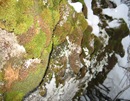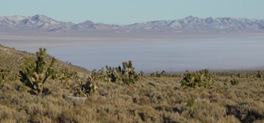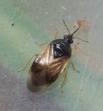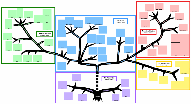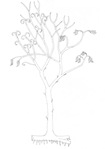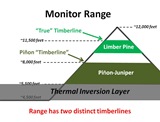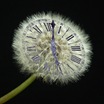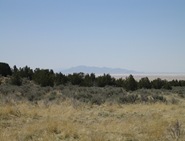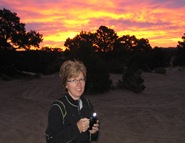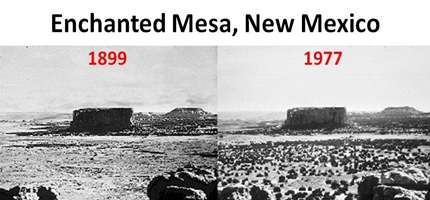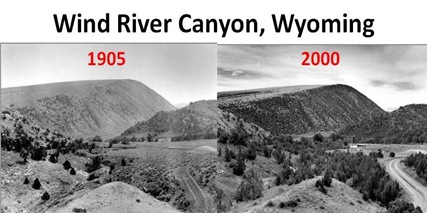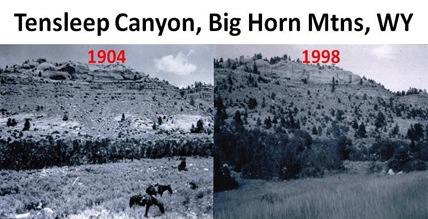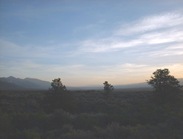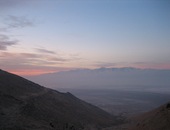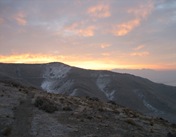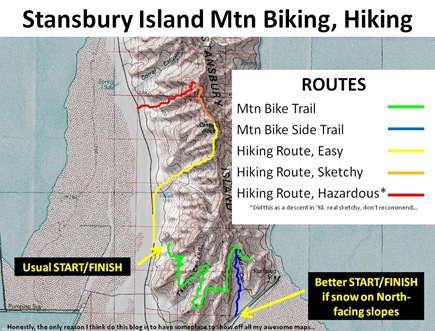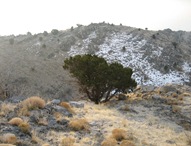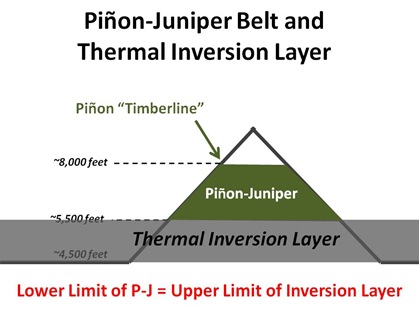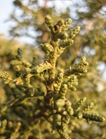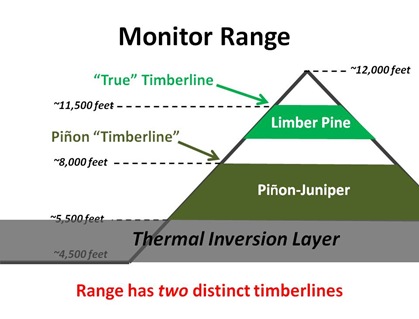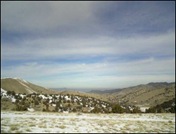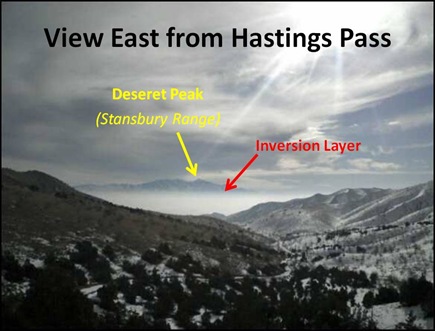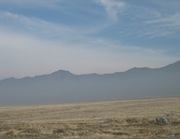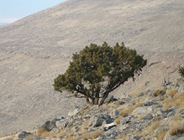 So my recent run out to the West Desert has left me with Junipers on the brain. Over the past year I’ve blogged about them once or twice, usually out of admiration for their toughness, their durability, and some of the structural reasons for behind them (which I talked about in this post.) But the more I get to know and learn about Juniper, the more I realize how much I’ve taken it for granted in the 13+ years I’ve lived here.
So my recent run out to the West Desert has left me with Junipers on the brain. Over the past year I’ve blogged about them once or twice, usually out of admiration for their toughness, their durability, and some of the structural reasons for behind them (which I talked about in this post.) But the more I get to know and learn about Juniper, the more I realize how much I’ve taken it for granted in the 13+ years I’ve lived here.
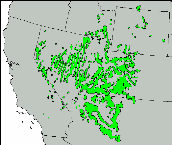 Utah Juniper (range map, right) is the most common, widespread tree in Utah. I always find it ironic that the state tree is Colorado Blue Spruce, when you generally have to go looking for wild-growing Blue Spruce in Utah. Utah Juniper, on the other hand, is everywhere. With the possible exception of I-80 between Knoll and Wendover, I can’t think of a place in Utah where you can drive 30 miles in any direction without passing it, and even flying over the state on a clear day, there’s no point at which you can’t pick some out looking out the window.
Utah Juniper (range map, right) is the most common, widespread tree in Utah. I always find it ironic that the state tree is Colorado Blue Spruce, when you generally have to go looking for wild-growing Blue Spruce in Utah. Utah Juniper, on the other hand, is everywhere. With the possible exception of I-80 between Knoll and Wendover, I can’t think of a place in Utah where you can drive 30 miles in any direction without passing it, and even flying over the state on a clear day, there’s no point at which you can’t pick some out looking out the window.
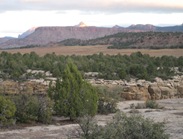 What’s interesting is that in spite of this ubiquity, Juniper is way different from just about all other conifers in Utah. All of the other Utah conifers we’ve looked at- Spruce, Piñon, Fir, Douglas Fir and all the Pines, are members of Pinaceae, the Pine Family, and as such, they’re all kind of Piney-Looking. But Juniper is not a member of Pinaceae, and hasn’t shared an ancestor with any of them in somewhere around 200 million years.
What’s interesting is that in spite of this ubiquity, Juniper is way different from just about all other conifers in Utah. All of the other Utah conifers we’ve looked at- Spruce, Piñon, Fir, Douglas Fir and all the Pines, are members of Pinaceae, the Pine Family, and as such, they’re all kind of Piney-Looking. But Juniper is not a member of Pinaceae, and hasn’t shared an ancestor with any of them in somewhere around 200 million years.
In North America, when we think of conifers, we think of a member of Pinaceae, because that’s what we’re surrounded with. But Pinaceae is only 1 of 8 conifer families in the world. Only 3 of those 8 are found here in “Northern” (US + Canada) North America. Besides Pinaceae, one other is Taxadaceae, or the Yew family, which we don’t get anywhere near Utah, and the other is the family to which Juniper belongs, Cupressaceae.
In previous posts I’ve mentioned how different families of conifers stick to different parts of the world, such as Pinaceae in the Northern hemisphere, and Araucariaceae in the Southern. Of the 8 families, only Cupressaceae spans the globe, occurring naturally on every continent except Antarctica.
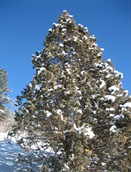 Here in Utah, the only Cupressaceae are Junipers, of which we have 3 species. Besides Utah Juniper, the other tree species is Rocky Mountain Juniper, Juniperus scopulorum, (pic right) which requires more moisture and occurs higher up. In the Wasatch you see a lot of it on South-facing slopes. (The pipeline trail in Mill Creek Canyon goes by several nice examples.) Rocky Mountain Juniper looks more “stand-up” in shape than Utah Juniper, with more of a “pointy-top” form to it. The 2 species can occur together and sometimes hybridize.
Here in Utah, the only Cupressaceae are Junipers, of which we have 3 species. Besides Utah Juniper, the other tree species is Rocky Mountain Juniper, Juniperus scopulorum, (pic right) which requires more moisture and occurs higher up. In the Wasatch you see a lot of it on South-facing slopes. (The pipeline trail in Mill Creek Canyon goes by several nice examples.) Rocky Mountain Juniper looks more “stand-up” in shape than Utah Juniper, with more of a “pointy-top” form to it. The 2 species can occur together and sometimes hybridize.
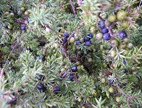 The 3rd species is Dwarf Juniper, J. communis var. jackii, which is a shrub, not a tree, and the distinctive feature of this guy (in addition to being strictly shrubby) is that the leaves are needle-like, not scale-like, as with the other 2 Junipers.
The 3rd species is Dwarf Juniper, J. communis var. jackii, which is a shrub, not a tree, and the distinctive feature of this guy (in addition to being strictly shrubby) is that the leaves are needle-like, not scale-like, as with the other 2 Junipers.
Tangent: Actually, the 2 “tree” junipers also have needle-like leaves, but only in their juvenile stage. As they grow into real trees, the leaves become scale-like. So how do you tell Dwarf Juniper from a juvenile of one of the other two species? One good way is berries. Junipers don’t become sexually active and bear berries until they’re about 30 years old (which is coincidentally the exact same age at which I have authorized my children to become sexually active) and so if you find a shrubby Juniper with needle-like leaves and berries, it is most certainly Dwarf Juniper.
But not far from Utah, Cupressaceae occur in many forms, and comprise true trees of the high mountain forests. 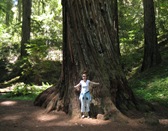 When we visited California last summer, many of the trees we looked at, including Incense Cedar, Giant Sequoia and Coast Redwood, (pic right w/Awesome Wife for scale) are all Cupressaceae. The cypresses we checked out by Mendocino are another good example, and even much further inland, up in the Idaho panhandle around Coeur d’Alene, the forests include Western Red Cedar, Thuja plicata. All of these trees, with the exception of Coast Redwood, bear distinctive scale-like leaves and papery bark that make them appear immediately “Juniper-ish” to a Utahn.
When we visited California last summer, many of the trees we looked at, including Incense Cedar, Giant Sequoia and Coast Redwood, (pic right w/Awesome Wife for scale) are all Cupressaceae. The cypresses we checked out by Mendocino are another good example, and even much further inland, up in the Idaho panhandle around Coeur d’Alene, the forests include Western Red Cedar, Thuja plicata. All of these trees, with the exception of Coast Redwood, bear distinctive scale-like leaves and papery bark that make them appear immediately “Juniper-ish” to a Utahn.
But the coolest, most remarkable thing about Junipers is that they’ve pulled off an evolutionary trick that no other Utah conifer- and no other Pinaceae member- has managed: they’ve evolved fruit.
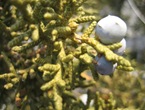 Now before any botany-savvy reader gags, I know that a Juniper berry is not a true berry, and that anatomically it is not a fruit. But functionally, it really is a fruit, as I’ll make the case in a moment.
Now before any botany-savvy reader gags, I know that a Juniper berry is not a true berry, and that anatomically it is not a fruit. But functionally, it really is a fruit, as I’ll make the case in a moment.
Throughout this blog I’ve paid a lot of attention to mechanisms of pollination and seed dispersal, categorizing plants for example as “Wind-Wind” (Maple) or “Wind-Agent” (Oak) or “Agent-Wind” (Dandelion.) And now it’s worth taking a closer look at “Agent” seed dispersal.
Broadly speaking, there are 2 strategies plants use for enlisting an agent to disperse their seeds. The first is the “Sticker” strategy. If you’ve ever returned home from a hike or mtn bike ride with a thistle stuck to your lycra or shoe, you know how this works: An animal- like you- brushes against the plant, seeds stick to the animal, and get transported some distance before falling or being picked off.
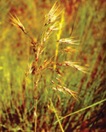 Tangent: The champion “Sticker” around here has got to be Cheatgrass, Bromus tectorum, a Eurasian exotic that has-regrettably- overrun the West since its introduction to North America in the late 1800’s, and now occurs in all 50 states. All desert hikers have spent countless post-hike hours picking Cheatgrass seeds out of socks.
Tangent: The champion “Sticker” around here has got to be Cheatgrass, Bromus tectorum, a Eurasian exotic that has-regrettably- overrun the West since its introduction to North America in the late 1800’s, and now occurs in all 50 states. All desert hikers have spent countless post-hike hours picking Cheatgrass seeds out of socks.
Eat-Me
The second is the “Eat-Me” Strategy, which induces the agent to disperse seeds by producing an appealing (and often highly nutritious) food item. Broadly speaking, there are 2 variants of “Eat-Me”: Nut and Fruit.
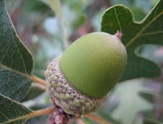 Eat-Me/Nut works like this: “I’ll make my seeds big, edible and delicious so that you’ll collect and eat them. But you’ll neglect, forget, or not need to eat, all of them, and some of those uneaten seeds that you disperse or cache will make new plants.” The angiosperms have developed countless examples of nuts, from pecans to brazil nuts, and probably the best example in Utah is acorns. (For all kinds of info about acorns, including an Acorn-Jelly-Action-Video, see this post.)
Eat-Me/Nut works like this: “I’ll make my seeds big, edible and delicious so that you’ll collect and eat them. But you’ll neglect, forget, or not need to eat, all of them, and some of those uneaten seeds that you disperse or cache will make new plants.” The angiosperms have developed countless examples of nuts, from pecans to brazil nuts, and probably the best example in Utah is acorns. (For all kinds of info about acorns, including an Acorn-Jelly-Action-Video, see this post.)
But Eat-Me/Fruit takes a different, more sophisticated approach in that it doesn’t make the seed itself into a food. Instead it says: “I’ll surround my seeds in a delicious, nutritious food substance which will induce you to distribute my seeds, either by discarding or passing (i.e. pooping) them.” The evolution of fruit is remarkable feat, and angiosperms have done it in thousands of different forms- peaches, oranges, apples, olives, etc. The best wild example here in the Wasatch is probably Utah Serviceberry, Amelanchier utahensis, which grows all over the place. In late August you can see purple, serviceberry-laden animal scat all over the trails in Park City and Pinebrook.
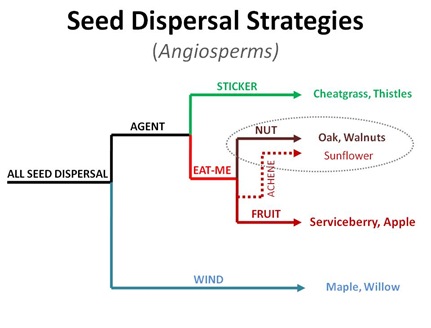
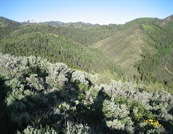 Side Note: In September, purple Serviceberry-scat was everywhere, and I can remember thinking, “I should take a pic of this…”. But then I thought, “Aw, when am I ever going to use a photo of poop in the blog?” Well, now I wish I had it. As a consolation, here’s a photo of Serviceberry in full bloom (foreground) in late June. Location = “Finesse” trail, up above Pinebrook.
Side Note: In September, purple Serviceberry-scat was everywhere, and I can remember thinking, “I should take a pic of this…”. But then I thought, “Aw, when am I ever going to use a photo of poop in the blog?” Well, now I wish I had it. As a consolation, here’s a photo of Serviceberry in full bloom (foreground) in late June. Location = “Finesse” trail, up above Pinebrook.
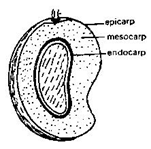 A fruit is the metamorphic end-product of a fertilized flower. The fertilized ovules become seeds, while the ovary develops into the flesh of the fruit. So when you’re eating an apple, you’re actually easting an apple tree ovary. Ovary-fruit is strictly an angiosperm accomplishment; no conifer- or any gymnosperm- has come up with it. Which brings us back to Juniper.
A fruit is the metamorphic end-product of a fertilized flower. The fertilized ovules become seeds, while the ovary develops into the flesh of the fruit. So when you’re eating an apple, you’re actually easting an apple tree ovary. Ovary-fruit is strictly an angiosperm accomplishment; no conifer- or any gymnosperm- has come up with it. Which brings us back to Juniper.
Tangent: Botany-savvy readers will know that this Fruit/Nut distinction is an oversimplification. Specifically it leaves out achenes. Achenes are anatomically fruits, with a flesh or husk made of seed-ovary, that contain a seed inside. Achenes can be wind or agent-dispersed. Mountain Mahogany achenes are a good example of the wind-dispered kind, while sunflower “seeds” would be an excellent example of an agent-dispersed achene; the “shell” is anatomically a fruit, and the edible part inside a true seed. But from a seed-dispersal strategy perspective, plants that produces agent-dispersed achenes generally follow the Nut Strategy, as the seed is consumed (and not passed.)
 My absolutely favorite achenes are Dandelion “seeds”, which are dispersed by wind and agents, where agents include House Finches, children and lawnmowers. (Back in the old days, when no one read this blog, I did a really cool series on Dandelion structure, genetics, distribution and natural history, which started with this post.)
My absolutely favorite achenes are Dandelion “seeds”, which are dispersed by wind and agents, where agents include House Finches, children and lawnmowers. (Back in the old days, when no one read this blog, I did a really cool series on Dandelion structure, genetics, distribution and natural history, which started with this post.)
Conifers of course have long utilized the Nut Strategy, as we’ve seen this past year with pretty much all the Wasatch PLTs. (Examples include Red Squirrels and White Fir, and Corvids and Limber Pine.) But Juniper, completely separate from angiosperms, has independently evolved the Fruit Strategy. Utah Juniper berries, which contain 1 or 2 seeds are eaten by many fruiting-eating birds, including the American Robin, Turdus migratorius, and Townsend’s Solitaire, Myadestes townsendi, as well mammals, most notably Jackrabbits (genus = Lepus, various species.)
 These animals pass the undigested seeds through their digestive tracts and poop them out, often at considerable distance from the parent tree. Studies of Juniper seeds gathered from Jackrabbit fecal pellets show that eaten/pooped seeds germinate more easily than un-eaten seeds.
These animals pass the undigested seeds through their digestive tracts and poop them out, often at considerable distance from the parent tree. Studies of Juniper seeds gathered from Jackrabbit fecal pellets show that eaten/pooped seeds germinate more easily than un-eaten seeds.
 Tangent: Townsend’s Solitaire is as to Junipers as Pinyon Jays are to Piñons. Outside of breeding season it lives almost exclusively on Juniper berries. During breeding season it amps up its diet with insects as well.
Tangent: Townsend’s Solitaire is as to Junipers as Pinyon Jays are to Piñons. Outside of breeding season it lives almost exclusively on Juniper berries. During breeding season it amps up its diet with insects as well.
The “fruit-flesh” of the Juniper berry isn’t an ovary- it’s the cone itself. After fertilization (via wind) female seed cones begin a second growth phase. The scales resume growing, merge into one another, become soft and fleshy, surrounding the seed(s) with an effective “berry”.
Part About Martinis
Tangent: Human have and do utilize Juniper berries as well. Paiute Indians ate them in various forms, and Juniper berries are today used as the flavoring agent in gin.
 Nested Tangent: Here’s a cool little factoid about me: I make the Best Martini Ever. This sounds like bragging, but it is simply a fact. I am an insufferable martini snob, to the point where I almost never order a martini in a bar or restaurant (and certainly never here in Utah) and drink only those prepared by myself, or close, trusted friends whose martini-making skills I know and respect, most notably Arizona-Steve and Paramedic-Michael.
Nested Tangent: Here’s a cool little factoid about me: I make the Best Martini Ever. This sounds like bragging, but it is simply a fact. I am an insufferable martini snob, to the point where I almost never order a martini in a bar or restaurant (and certainly never here in Utah) and drink only those prepared by myself, or close, trusted friends whose martini-making skills I know and respect, most notably Arizona-Steve and Paramedic-Michael.
The berries used in gin are from the European Common Juniper, Juniperus communis var. communis. I don’t know if anyone’s tried making gin with berries from Utah Juniper.
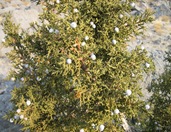 What I love about Juniper is that it’s a great example of how evolution can reliably produce really complex, sophisticated mechanisms, like fruit. I say reliably because the same mechanism has evolved independently multiple times, even though it seems so darned unlikely and difficult. And what’s more, the living world is filled with examples just like this, of evolution reliably, repeatedly, coming up with really complicated stuff that works beautifully, and doing so over and over again. (My favorite example so far: C4 photosynthesis in plants, which we looked at when we checked out Crabgrass last Spring.) So don’t be put off by those who discount evolution as “just a theory”; it works, it delivers the goods over and over again, and you can be reminded of its power, wonder and utter coolness every time you bike, hike or drive past a stand of Utah Juniper.
What I love about Juniper is that it’s a great example of how evolution can reliably produce really complex, sophisticated mechanisms, like fruit. I say reliably because the same mechanism has evolved independently multiple times, even though it seems so darned unlikely and difficult. And what’s more, the living world is filled with examples just like this, of evolution reliably, repeatedly, coming up with really complicated stuff that works beautifully, and doing so over and over again. (My favorite example so far: C4 photosynthesis in plants, which we looked at when we checked out Crabgrass last Spring.) So don’t be put off by those who discount evolution as “just a theory”; it works, it delivers the goods over and over again, and you can be reminded of its power, wonder and utter coolness every time you bike, hike or drive past a stand of Utah Juniper.
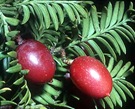 PS-Note: I picked Junipers to talk about the parallel evolution of fruit because they’re an example here in Utah. But I’d be remiss if I wrapped up without mentioning the wonderful Podocarps, of the family Podocarpaceae.
PS-Note: I picked Junipers to talk about the parallel evolution of fruit because they’re an example here in Utah. But I’d be remiss if I wrapped up without mentioning the wonderful Podocarps, of the family Podocarpaceae. 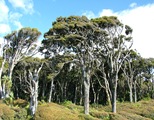 This amazing family of conifers has evolved all sorts of wonderful fruit-like cones in a variety of shapes and colors. Alas, the fabulous Podocarps stick mainly to the Southern hemisphere, getting no closer to Utah than lower Central America.
This amazing family of conifers has evolved all sorts of wonderful fruit-like cones in a variety of shapes and colors. Alas, the fabulous Podocarps stick mainly to the Southern hemisphere, getting no closer to Utah than lower Central America.
 I once worked with a guy who used to say, “Never make a decision about moving in Utah in February.” I think that’s the best living-in-Utah advice I ever heard. Because by February I’m always starting to think about moving.
I once worked with a guy who used to say, “Never make a decision about moving in Utah in February.” I think that’s the best living-in-Utah advice I ever heard. Because by February I’m always starting to think about moving.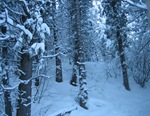 Yeah, yeah, snow is pretty and skiing is fun. But it’s cold and icy and gloomy, and nothing’s growing or green and I’m sick of it. I’m ready to say, “Uncle.”
Yeah, yeah, snow is pretty and skiing is fun. But it’s cold and icy and gloomy, and nothing’s growing or green and I’m sick of it. I’m ready to say, “Uncle.” 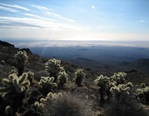 Tonight after work I’m flying down to Phoenix. My best friend, Arizona Steve, will pick me up at the terminal, and we’ll drive straight out into the Sonoran desert for 2 days & nights of scrambling up and down peaks, and sleeping under the stars.
Tonight after work I’m flying down to Phoenix. My best friend, Arizona Steve, will pick me up at the terminal, and we’ll drive straight out into the Sonoran desert for 2 days & nights of scrambling up and down peaks, and sleeping under the stars.




